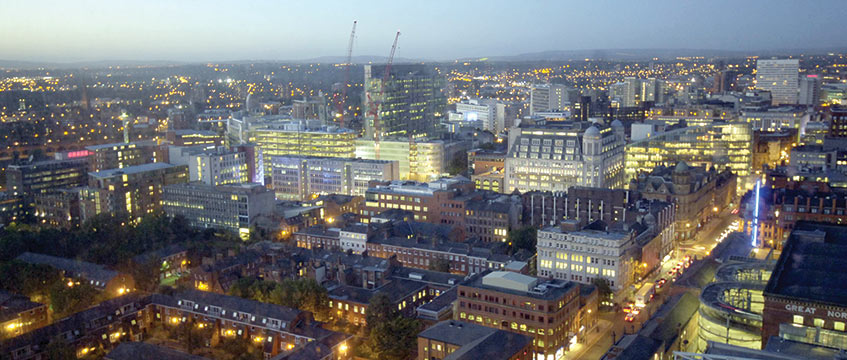Will Manchester’s white collar dependence slow its recovery?
The circumstances of the past 12 months have been challenging for all major regional cities – but there’s a compelling argument to be made that Manchester is the one most acutely impacted, and potentially the one with the biggest hill to climb in terms of post-pandemic adaptation.
In “normal” times, Manchester was more reliant than most other UK cities on incoming office commuters to supplement daytime population during the working week.
EG analysis of ONS data calculates there are 72% more white-collar jobs in the city centre than there are white-collar residents. Among major UK regional cities only Cambridge tops this figure, where there are 80% more people with office jobs in the city centre than there are white-collar residents.
The circumstances of the past 12 months have been challenging for all major regional cities – but there’s a compelling argument to be made that Manchester is the one most acutely impacted, and potentially the one with the biggest hill to climb in terms of post-pandemic adaptation.
In “normal” times, Manchester was more reliant than most other UK cities on incoming office commuters to supplement daytime population during the working week.
EG analysis of ONS data calculates there are 72% more white-collar jobs in the city centre than there are white-collar residents. Among major UK regional cities only Cambridge tops this figure, where there are 80% more people with office jobs in the city centre than there are white-collar residents.
Unlike Manchester, however, Cambridge has had some success in supplanting the “lost” office worker population by attracting other visitors to the city centre – especially at weekends – and even peaked at 9% above pre-lockdown levels of city centre footfall in mid-October, according to Centre for Cities’ High Street Recovery Tracker.
Manchester, meanwhile, is yet to hit 60% of pre-lockdown foot traffic in the city centre at any point since last March. All other comparable cities have hit at least 64% of “normal” activity at some point in the past year, with Bristol, Leeds, Liverpool and Glasgow all hitting 70%-plus during early autumn.
Returning white-collar workforce volumes are hard to predict but Manchester should be bracing itself for the reality that there will be some form of persistence in remote working; and an associated reduction in daytime patronage from office workers compared to that which went before.
There is no silver bullet for dealing with these kinds of issues, and different strategies for adapting to whatever the post-pandemic realities are will need to be developed at a local level across each of our key cities. It is encouraging, however, to note that Manchester comes out on top for pipeline of conversions to residential units and leisure space according to figures from Radius Data Exchange.
It indicates that, from a real estate perspective at least, the tough adaptation process for the city is already under way.
Generating more homes should enhance Manchester’s ability to retain city centre footfall even if erstwhile commuters don’t necessarily return five days per week – and leisure activities will also be hugely influential in improving dwell time and maintaining tourism appeal.
This evolution of Manchester’s built environment is hugely welcome, of course, but it is just one part of a lengthy and complicated recovery process.
Manchester is undoubtedly capable of coming out the other side of this challenging time stronger than it was before – but with a uniquely tough set of circumstances dealt to the city over the past 12 months, it might need to draw on all its historic resilience to battle through.
To send feedback, e-mail graham.shone@egi.co.uk or tweet @GShoneEG or @estatesgazette
Picture © Mark Campbell/Shutterstock











